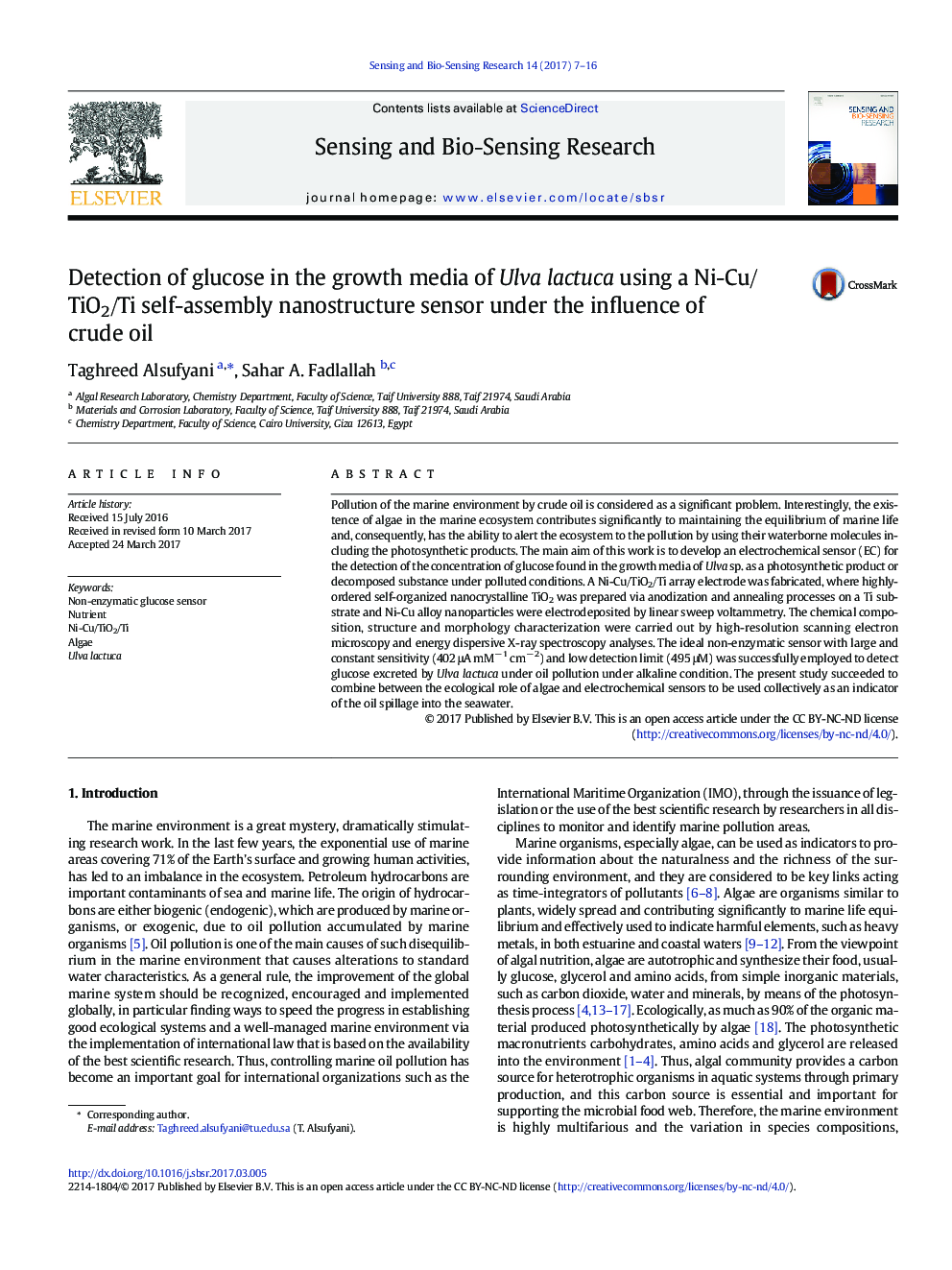| Article ID | Journal | Published Year | Pages | File Type |
|---|---|---|---|---|
| 5019656 | Sensing and Bio-Sensing Research | 2017 | 10 Pages |
Pollution of the marine environment by crude oil is considered as a significant problem. Interestingly, the existence of algae in the marine ecosystem contributes significantly to maintaining the equilibrium of marine life and, consequently, has the ability to alert the ecosystem to the pollution by using their waterborne molecules including the photosynthetic products. The main aim of this work is to develop an electrochemical sensor (EC) for the detection of the concentration of glucose found in the growth media of Ulva sp. as a photosynthetic product or decomposed substance under polluted conditions. A Ni-Cu/TiO2/Ti array electrode was fabricated, where highly-ordered self-organized nanocrystalline TiO2 was prepared via anodization and annealing processes on a Ti substrate and Ni-Cu alloy nanoparticles were electrodeposited by linear sweep voltammetry. The chemical composition, structure and morphology characterization were carried out by high-resolution scanning electron microscopy and energy dispersive X-ray spectroscopy analyses. The ideal non-enzymatic sensor with large and constant sensitivity (402 μA mMâ 1 cmâ 2) and low detection limit (495 μM) was successfully employed to detect glucose excreted by Ulva lactuca under oil pollution under alkaline condition. The present study succeeded to combine between the ecological role of algae and electrochemical sensors to be used collectively as an indicator of the oil spillage into the seawater.
Graphical abstractDownload high-res image (172KB)Download full-size image
